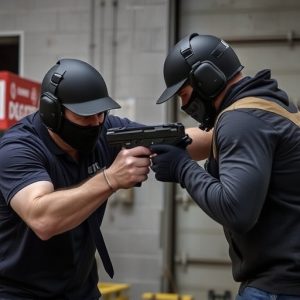Optimizing Stun Gun Effectiveness: Electrode Spacing & Top Models
Optimal electrode spacing in concealed carry stun guns is key for effective self-defense, with advan…….
Optimal electrode spacing in concealed carry stun guns is key for effective self-defense, with advanced designs prioritizing precise placement. Factors like device size, user body type, and manufacturer guidelines influence electrode alignment, affecting shock distribution. Top models like Taser Pulse 2, Pepperball X2, StunMaster Nova, and Guardalife offer powerful jolts while maintaining discretion, with adjustable spacing for control. Strategic electrode arrangements enhance contact area and current flow, ensuring swift incapacitation in various scenarios. Research through testing and simulations optimizes stun gun performance, while training and responsible handling ensure safe use of best concealed carry stun gun models.
In the world of personal defense, stun guns have emerged as a game-changer, offering individuals a non-lethal option to deter threats. One critical aspect often overlooked is electrode spacing—a key determinant of effectiveness. This article delves into understanding how stun gun electrode placement impacts shock delivery. We explore factors influencing optimal positioning, review best-in-class concealed carry stun guns, and analyze models based on design and features. Additionally, we discuss testing methodologies and safety considerations for responsible use.
- Understanding Stun Gun Electrode Spacing: Key to Effectiveness
- Factors Influencing Optimal Electrode Placement
- Best Concealed Carry Stun Guns on the Market
- Evaluating Stun Gun Models: Design and Features for Effective Electrodes
- Testing and Research on Electrode Spacing for Maximal Impact
- Safety Considerations: Training, Use, and Maintenance for Optimal Results
Understanding Stun Gun Electrode Spacing: Key to Effectiveness

The effectiveness of a stun gun largely relies on its electrode spacing, a crucial factor that influences how well it delivers a powerful shock. Electrode placement and distance between them determine the current flow, ensuring a swift and effective incapacitation. Stun guns with optimal electrode spacing are designed to disrupt muscle control in the target area, leading to temporary paralysis and disorientation.
When considering the best concealed carry stun gun models, electrode spacing should be at the forefront of your mind. Many modern stun guns incorporate advanced designs, ensuring precise and strategic electrode placement for maximum impact. This consideration is vital not just for self-defense but also for law enforcement officers who rely on these devices in high-pressure situations, emphasizing the role of electrode spacing as a key component in stun gun effectiveness.
Factors Influencing Optimal Electrode Placement
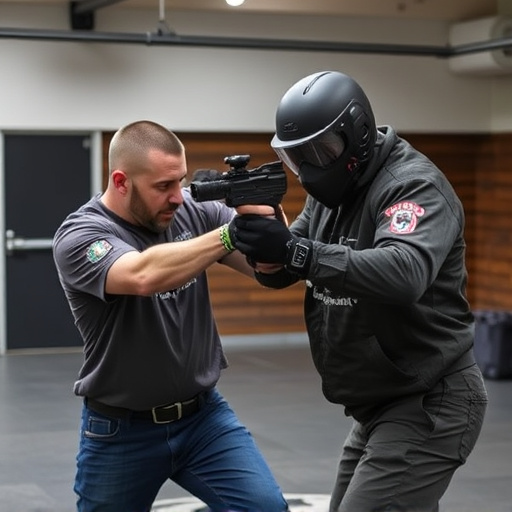
The optimal electrode placement for a stun gun is influenced by several key factors, particularly in the context of best concealed carry stun gun models designed for self-defense. One critical aspect is the size and shape of the device; smaller, more compact stun guns may have limited space for electrodes, requiring precise positioning to ensure maximum effectiveness. The placement should aim to deliver a strong electrical current through both front and back electrodes, ensuring a powerful shock when activated.
Another important consideration is the user’s body type and physical characteristics. The distance and alignment of electrodes can vary based on an individual’s build, affecting the stun gun’s performance. Proper electrode spacing allows for a balanced shock distribution across the target area, enhancing the stun gun’s effectiveness against larger or smaller individuals alike. Expert recommendations and manufacturer guidelines play a vital role in understanding these nuances, ensuring users maximize the impact of their best concealed carry stun gun models.
Best Concealed Carry Stun Guns on the Market
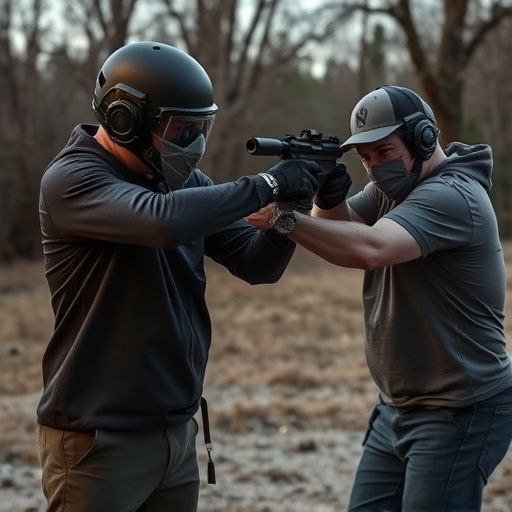
When it comes to choosing a best concealed carry stun gun, several models stand out for their effectiveness and discreet design. Top-rated options like the Taser Pulse 2 and the Pepperball X2 offer powerful jolts while maintaining a low profile. These stun guns are designed with compactness in mind, fitting comfortably in pockets or hidden under clothing.
The StunMaster Nova and the Guardalife Personal Safety Device are other popular choices. They feature adjustable electrode spacing, ensuring precise control over the level of shock delivered. This customization is crucial for effective self-defense in various scenarios. Their sleek profiles and lightweight build make them ideal for everyday carry without drawing unwanted attention.
Evaluating Stun Gun Models: Design and Features for Effective Electrodes
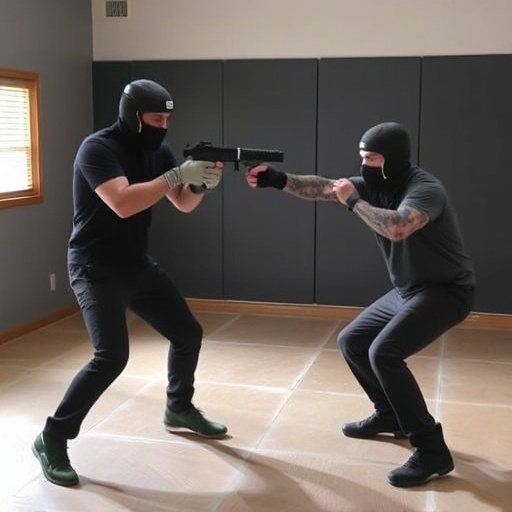
When evaluating stun gun models for optimal electrode spacing and effectiveness, it’s crucial to consider both design and specific features. Best concealed carry stun guns often prioritize compactness, making them more challenging to equip with large electrodes. However, even in these small forms, manufacturers are incorporating innovative designs that ensure effective stun capabilities. Look for models featuring advanced electrode placement that allows for better current flow, which is key to disabling a target swiftly and safely.
The ideal stun gun should balance compactness and power, ensuring the electrodes are strategically placed to maximize shock delivery. Some top-rated best concealed carry stun guns employ parallel or crisscross electrode arrangements, enhancing contact area and jolting the target with more intense electrical pulses. These design elements contribute significantly to a stun gun’s effectiveness, making it a reliable tool for personal safety without sacrificing convenience for concealed carry enthusiasts.
Testing and Research on Electrode Spacing for Maximal Impact
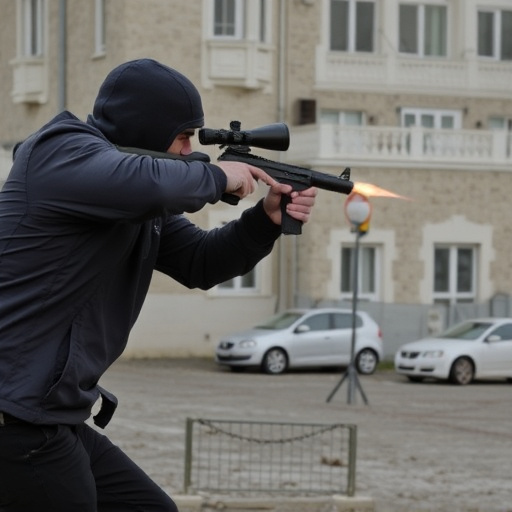
Testing and research play a pivotal role in understanding the optimal electrode spacing for stun guns, ensuring maximum effectiveness when it matters most. Studies have shown that the arrangement and distance between electrodes significantly impact the stun gun’s performance, particularly in self-defense scenarios where swift and powerful immobilization is crucial. Researchers employ various methods to gauge the impact of different electrode configurations.
One approach involves examining real-world applications, testing best concealed carry stun gun models with varying electrode setups. These tests evaluate factors like current flow, shock intensity, and time to incapacitation. Additionally, laboratory simulations are conducted to isolate variables, allowing for a deeper understanding of how electrode spacing affects the device’s overall performance. Such research contributes to advancements in stun gun technology, ensuring that users have access to effective self-defense tools with precise and reliable outcomes.
Safety Considerations: Training, Use, and Maintenance for Optimal Results

When it comes to the effectiveness of a stun gun, proper training and responsible use are key factors alongside electrode spacing. The best concealed carry stun gun models should be easy to handle and deploy, but their power is only as good as the user’s ability to utilize them safely and accurately. Training courses specifically designed for stun guns teach individuals how to aim correctly, administer a safe but powerful shock, and understand de-escalation techniques. This ensures users can effectively defend themselves while minimizing risks to bystanders or innocent people.
Regular maintenance is another critical aspect of safety considerations. Stun guns require periodic checks and servicing to ensure optimal performance. This includes inspecting the device for any signs of damage or wear, testing the batteries, and verifying that all electrical components are functioning correctly. Proper maintenance not only extends the lifespan of your stun gun but also guarantees its reliability in emergency situations. Combining thorough training with regular maintenance ensures that you, as the user, can depend on your stun gun for protection, maximizing its effectiveness while adhering to safety standards.
When choosing a stun gun, especially among the best concealed carry models on the market, understanding electrode spacing is crucial. The optimal placement of electrodes significantly impacts effectiveness. Factors like body type and attack vector play roles in determining ideal electrode positioning. Testing and research highlight the importance of specific spacing for maximal impact. Safety considerations, including training, proper use, and regular maintenance, are essential to ensure optimal results when deploying stun guns with effective electrodes.

